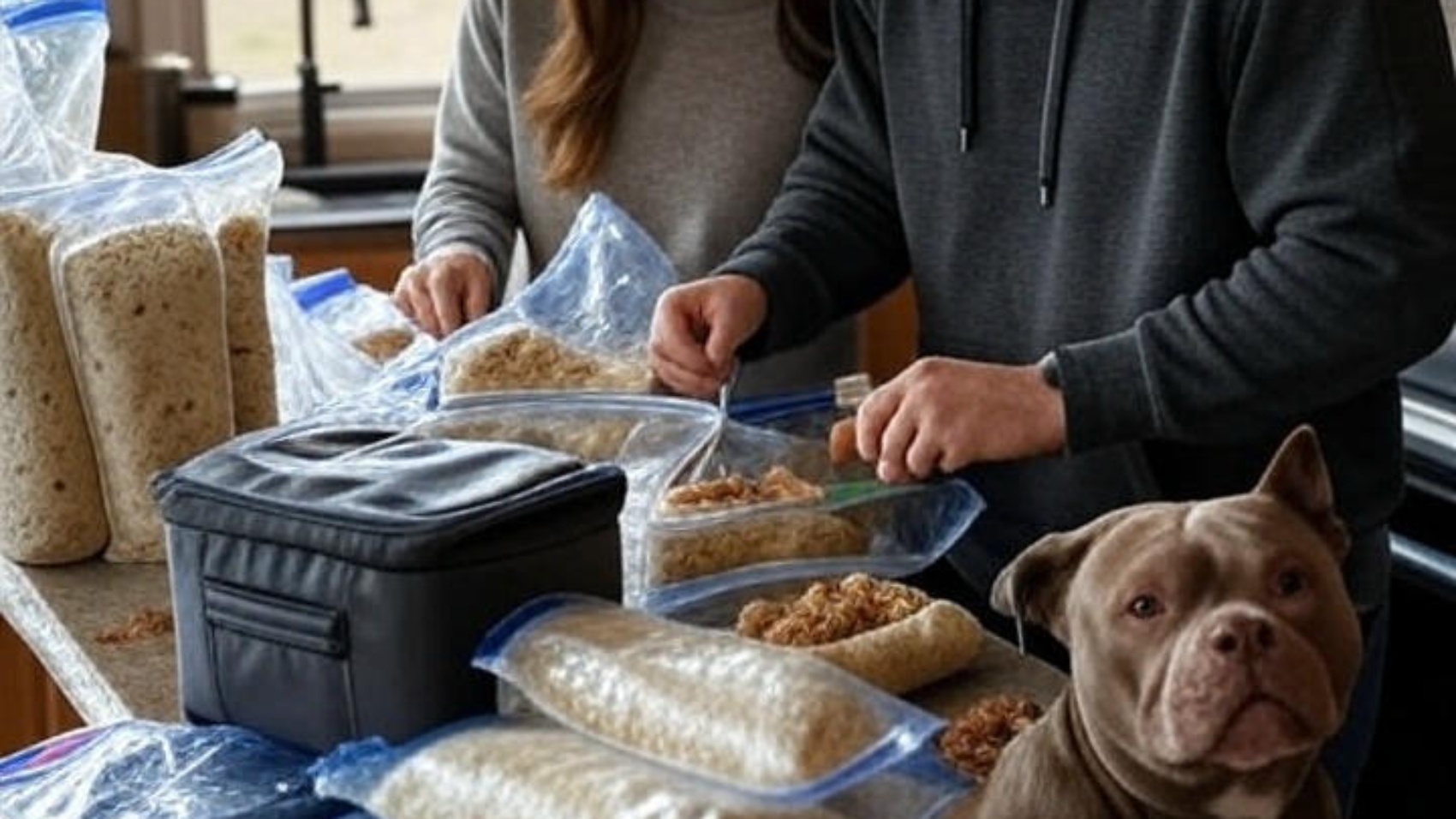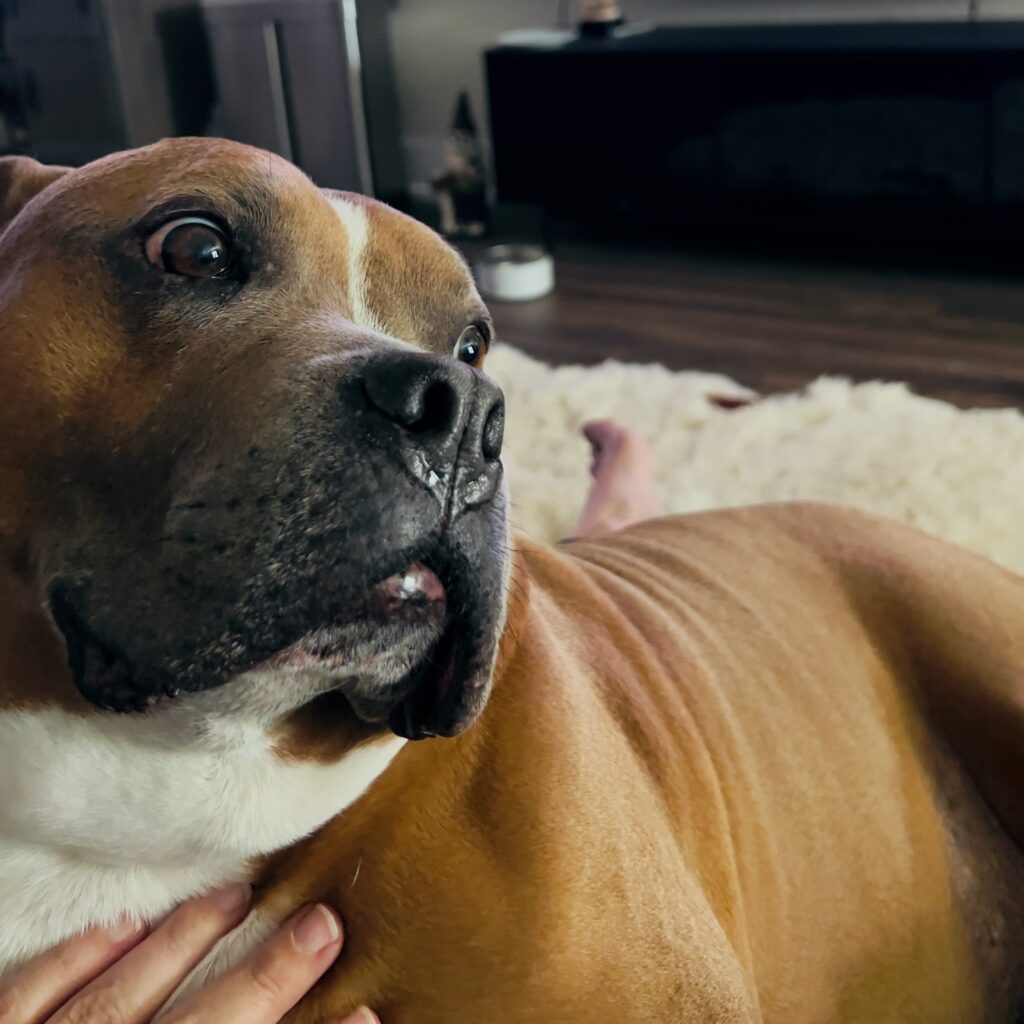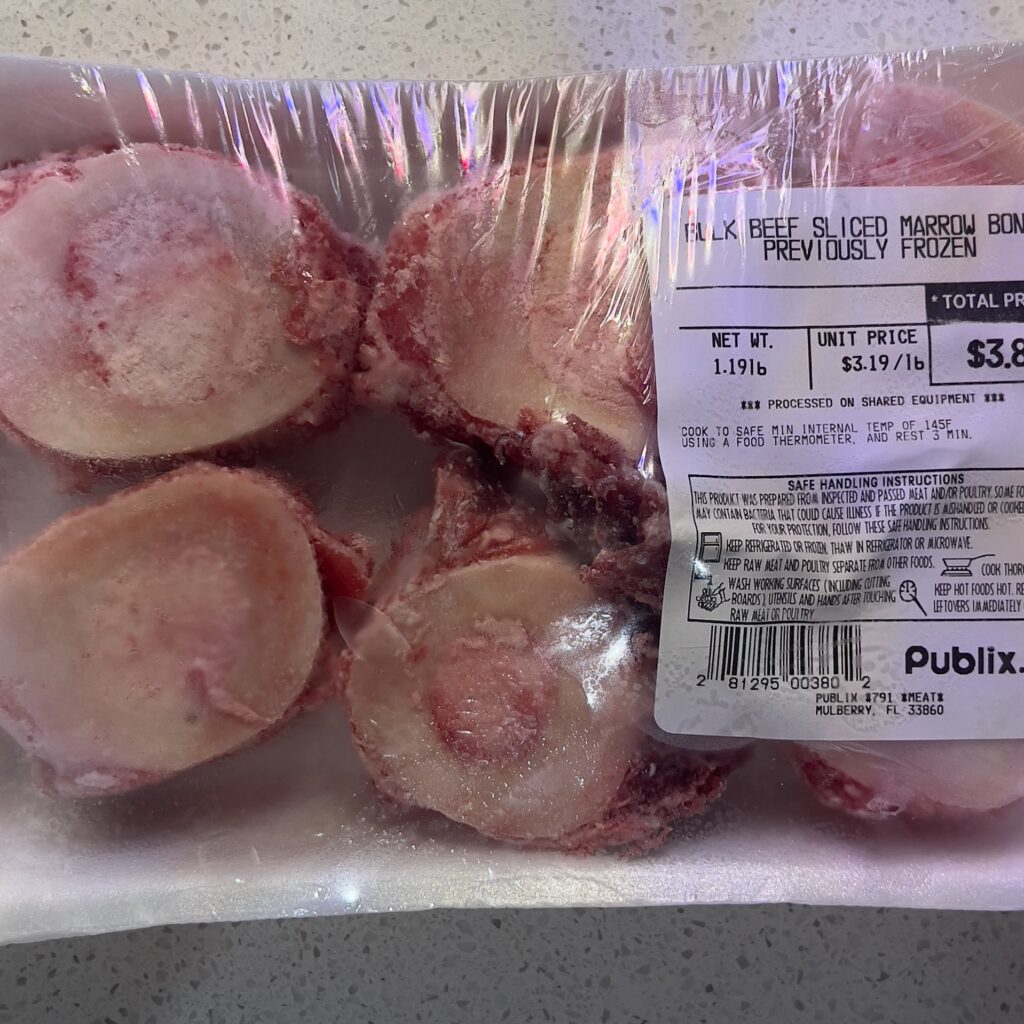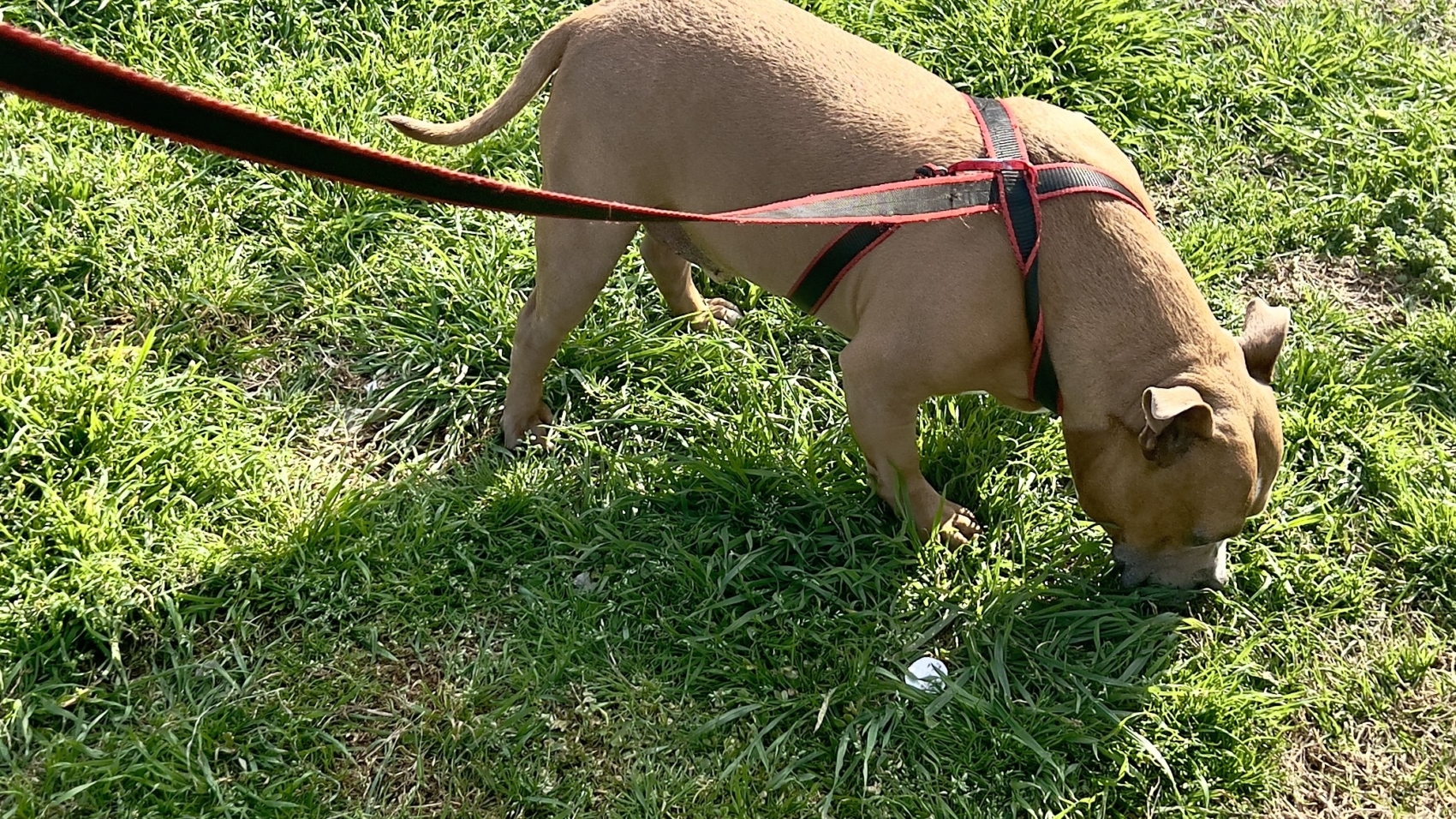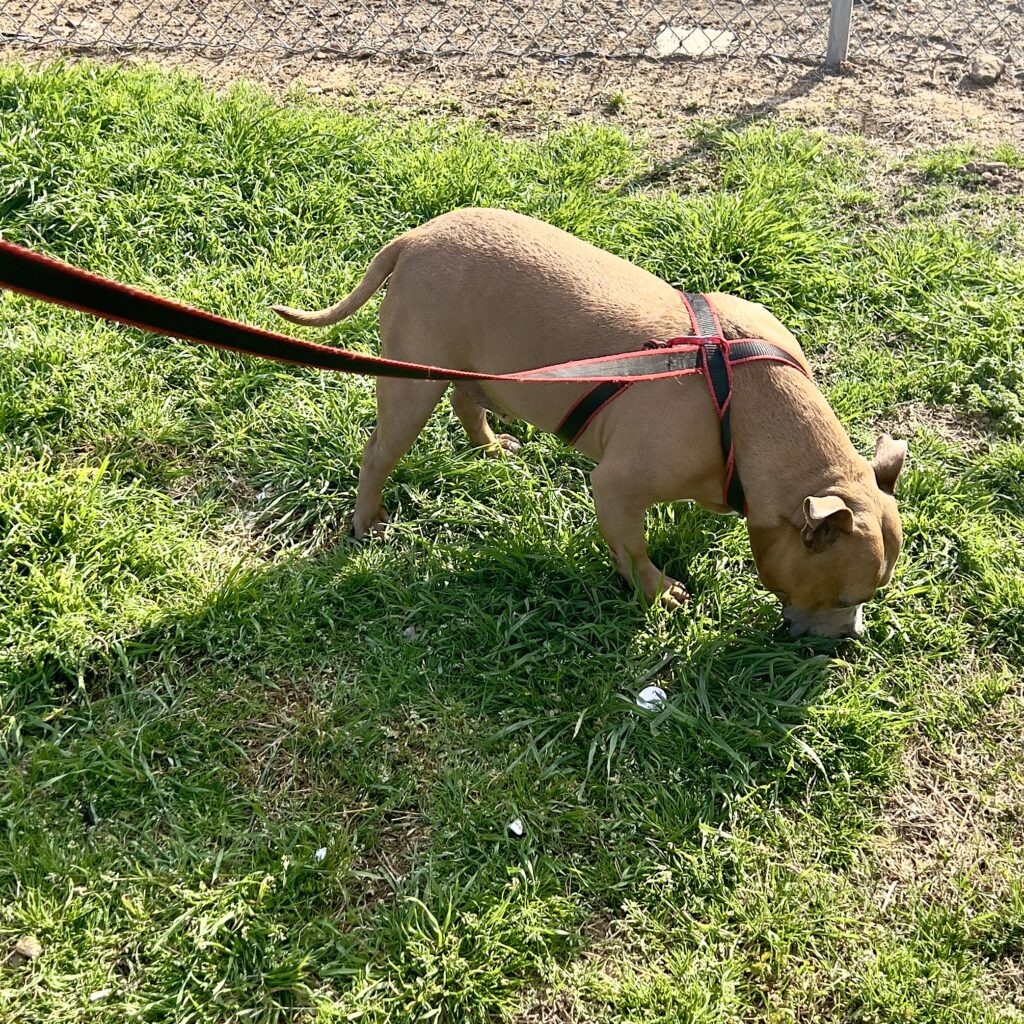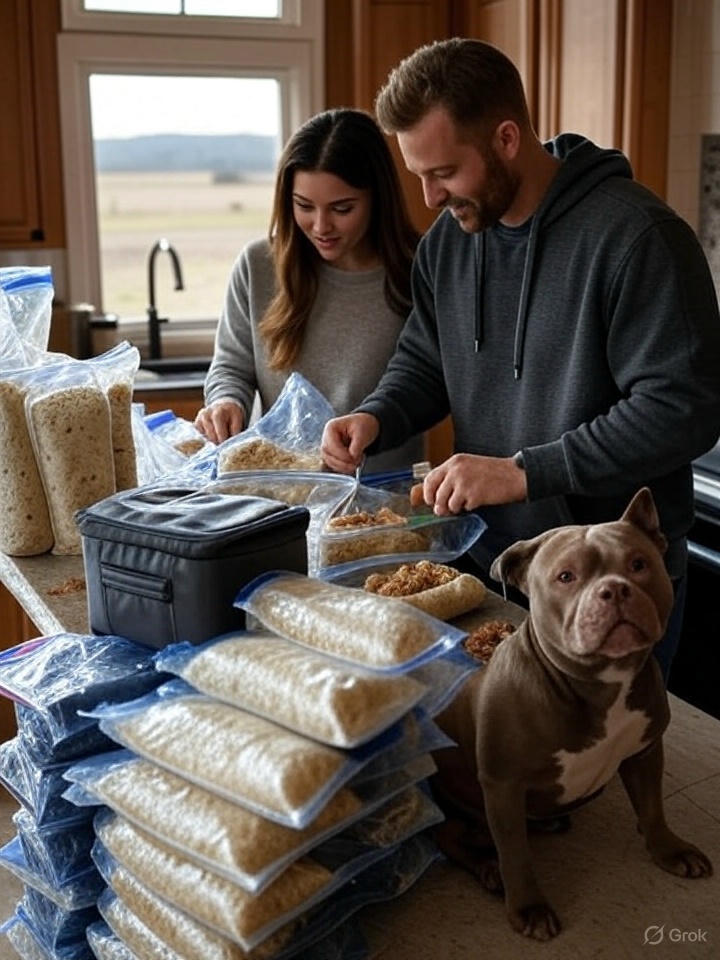
As Over-the-Road truckers, my husband and I are out for about 10 days at a stretch, with our trusty road dog, Thumper, by our side. Truck meal planning for the three of us is a critical part of our routine to stay healthy, save money, and manage limited space. Here’s how I plan and prepare meals for life on the road.
Human Meals: Smart Prep for Small Spaces
Our truck has a compact built-in fridge with a freezer about the size of a shoebox, so space is tight. We also use a soft-sided cooler with ice packs for extra storage. To make the most of it, I focus on versatile, space-saving foods:
- Frozen Convenience Foods: I stock up on easy items like breakfast sandwiches, burritos, and other small frozen meals that fit our tiny freezer and are quick to heat.
- Pre-Cooked Proteins: I prepare chicken thighs, hamburger patties, and pot roast at home, vacuum-sealing them for freshness and space efficiency.
- Mix-and-Match Sides: I cook pasta and rice in advance, pairing them with a veggie blend of red peppers, onions, garlic, mushrooms, and spinach for quick, nutritious meals.
- Breakfast: I prep breakfast burritos in advance, wrapping them in wax paper and freezing them for quick meals. To keep things interesting, I mix up the fillings with different meats, veggies, and cheeses, ensuring our mornings stay flavorful and far from boring.
- Shelf-Stable Staples: Ramen, canned chili, sandwich bread, and snacks round out our options for variety and convenience.
When I’m home, I cook in bulk and vacuum-seal leftovers in flat bags to maximize storage. In the truck, we rely on a microwave and a Ninja Crispi, which gives us flexibility to reheat, air-fry, or even bake. While truck stops offer fast food, we prioritize our prepped meals to maintain portion control and healthier eating.
Thumper’s Meals: Raw and Ready
Our dog, Thumper, thrives on a predator raw diet, and I make sure his meals are as road-ready as ours. I chop his ingredients at home, portion each day’s meal, and vacuum-seal them individually for easy management. His food stays frozen, with one meal moved to the fridge the day before it’s needed. For more details on his diet, check out my post, The Predator Raw Diet for My Dog: A Journey to Primal Nutrition.
Truck Meal Planning: Tips for Success
- Plan Ahead: Dedicate time before your trip to cook, portion, and pack efficiently.
- Maximize Space: Vacuum-sealing is a game-changer for fitting more into small fridges and coolers.
- Stay Flexible: Mix-and-match ingredients keep meals varied without requiring extra storage.
- Prioritize Health: Home-prepped meals help avoid the temptation of truck stop fast food.
With a little prep and the right tools, eating well on the road is not only possible but also enjoyable—for both humans and dogs!
If you enjoyed this article, please check out our other articles and stories in our blog.

